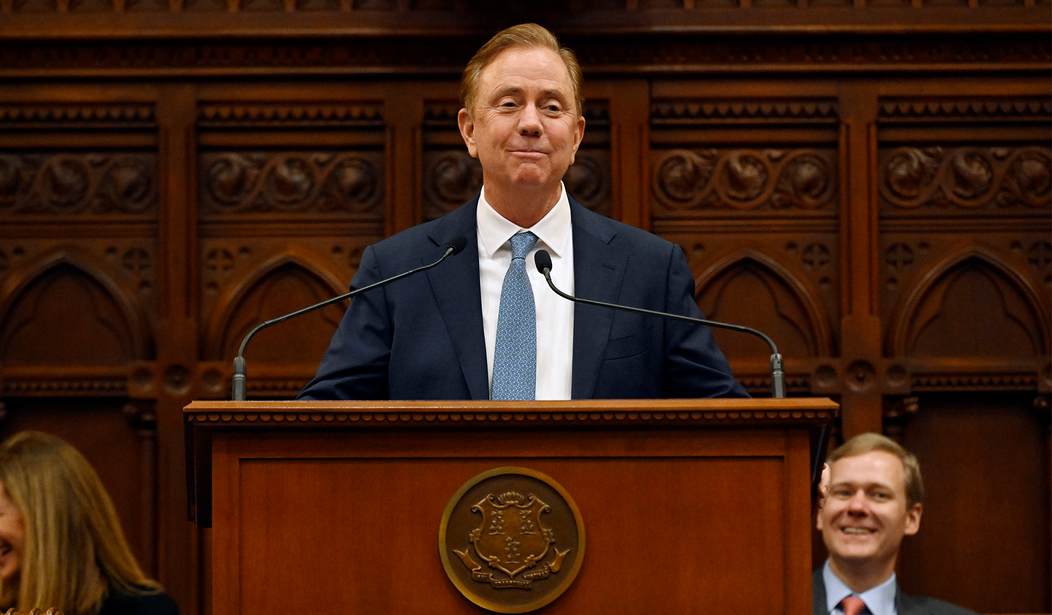There are a few thoughts that popped into my mind as I began to research this idea that Gov. Ned Lamont (D-Conn.) was going to forgive approximately $1 billion in medical debt. At first glance, my thought was, “Hey, if you can do it go for it.” Insurance companies are some of the richest organizations in the world and medical costs are astronomical, but in the back of my mind I was still skeptical.
The next thought I had was something that my parents taught me: if something seems too good to be true, it probably is. For me, the numbers in this forgiveness plan and in others that are planned just don’t add up. It left me with a sense of doubt that this was the whole story, that it was just a matter of time until the other shoe dropped.
On Friday, Lamont announced his plan on "Good Morning America." He stated that this had already been done in several cities, but this was the first time a state was doing it. The state plans to erase approximately $1 billion in medical debt this year by leveraging $6.5 million in American Rescue Plan Act funds. Lamont states that the state will be working with a nonprofit organization that purchases medical debt at a reduced rate and the debt would be erased by June of this year.
This is when I had my first hesitation. How can $6.5 million erase $1 billion in debt? That’s less than one penny on the dollar. I understand that in negotiations when a company doesn’t expect to recover a debt, it will accept a certain amount against the dollar amount, but I personally have never heard of a company accepting just a penny on the dollar.
In the interview with GMA, Lamont said:
This is not something they did because they were spending too much money, this is something because they got hit with a medical emergency. They should not have to suffer twice, first with the illness, then with the debt. I think it’s really important that people have a sense that they can start building wealth of their own. We’re making that easier for people to do and the best way to start is eliminate the debt you’ve got.
This initiative will not only help Connecticut residents who are saddled with debt financially, but it also lifts the significant emotional toll that this type of debt has on individuals who do not have the means to get out from under such crushing debt, especially for those who are simultaneously experiencing significant medical problems.
Not everyone was pleased with Lamont’s plan. House Republican leader Vincent Candelora voiced his displeasure with the program.
The Governor’s celebratory lap over his move to use taxpayer dollars to pay off bad medical debt carried by hospitals is a slap in the face to residents and organizations who want adequate funding for government’s core functions but time and again see his administration and the Democrat-controlled legislature prioritize spending to support policies from their agenda that are far outside of that scope.
The Governor may enjoy the headlines he’s getting from this, but I have little doubt this policy decision will disappoint people with debt who don’t qualify for relief and frustrate organizations and officials as capitol conversation continues about meeting needs such as local special education costs, heating assistance for vulnerable residents, and investing in Medicaid rates for all residents.
The governor originally unveiled his plan last February. Then the idea was to use $20 million in federal pandemic aid to potentially cancel billions of dollars in medical debt for thousands of Connecticut residents.
Last May, Lamont gathered a group to discuss his plan. At that meeting he told the group that:
I think this $20 million is an incredibly important investment to really help the lives of tens of thousands of families right here in Connecticut so we really show that this medical emergency from COVID is over and we’re helping everybody get back on their feet.
Deidre Gifford, executive director of the Office of Health Strategy, said that 41% of adults in the U.S. have medical debt, and a disproportionate share of those are people of color and those living with disabilities and chronic illnesses.
Executives from Trinity Health of New England attended and participated in the discussion. The hospital system announced last April that it would partner with non-profit RIP Medical Debt to cancel $32.8 million of medical debt resulting from care received at Trinity. The effort will erase debt for 22,300 patients, the majority of whom live in Connecticut.
RIP Medical Debt purchases medical debt from low-income families at a steep discount. The organization’s website claims that for every $100 donated cancels $10,000 in medical debt. At the time, Gifford said the state could work with the same organization if Lamont’s proposal succeeds.
Lamont’s plan, which went into effect on Feb. 1, would wipe out the medical debt for between 220,000 and 250,000 people. According to the White House, $16 million of the stimulus funds are being used to purchase and wipe out nearly $1.5 billion in medical debt in communities across the country, including New Orleans, Pittsburgh, Toledo, Ohio, and Cook County, Ill., where Chicago is located.
Elsewhere, New York City recently announced a plan to invest $18 million to erase $2 billion in medical debt for up to 500,000 eligible New Yorkers over the next three years.
I want to believe that this is possible. I really do, but color me skeptical. The amount of this “disappearing debt” is staggering. Using these three examples, just $40.5 million would make $4.5 billion in debt vanish. I have chased some numbers down the rabbit hole and with written off losses and donation deductions considered; it still doesn’t add up to me.
I am not an accountant; still I have to believe that behind the scenes there is more to this story. Will taxes increase in some way? Will new ones be created, or is something more reprehensible taking place in the political darkness?
If medical debt can be satisfied using these ratios, then something definitely doesn’t make sense. As of January 2023, the entire U.S. medical debt was estimated at $195 billion. I’ll let you extrapolate the numbers. Will these plans only eliminate specific debt? Is the debt elimination supposed to ingratiate specific groups of people to a particular political party?
Obviously, everyone should draw their own conclusions, but it still leaves me with a lot of questions.









Join the conversation as a VIP Member